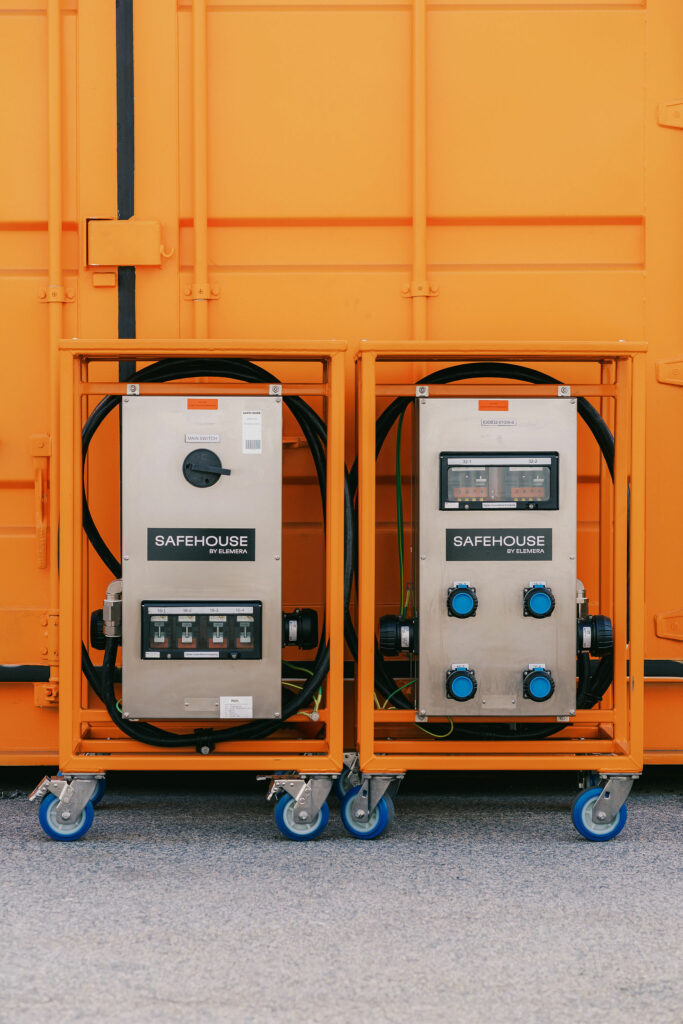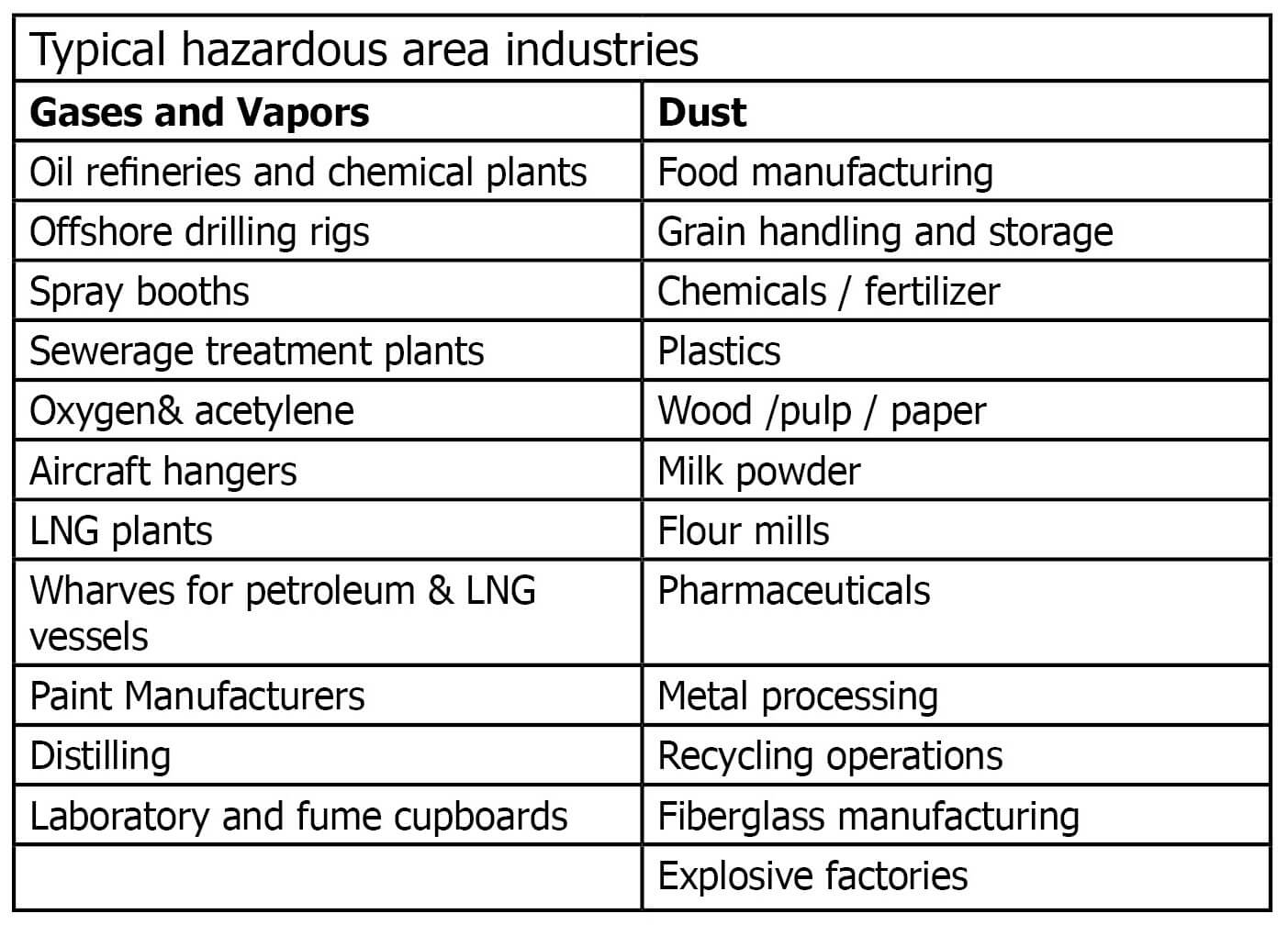Getting The Roar Solutions To Work
Getting The Roar Solutions To Work
Blog Article
An Unbiased View of Roar Solutions
Table of ContentsRumored Buzz on Roar SolutionsFacts About Roar Solutions RevealedSee This Report on Roar Solutions
In such an ambience a fire or explosion is possible when 3 basic conditions are satisfied. This is commonly described as the "hazardous location" or "burning" triangular. In order to secure installations from a potential surge an approach of evaluating and identifying a possibly dangerous area is called for. The objective of this is to guarantee the appropriate selection and installment of devices to inevitably prevent an explosion and to ensure safety of life.
(https://www.interweave.com/plus_old/members/roarsolutions/profile/)
No tools should be installed where the surface area temperature of the devices is above the ignition temperature level of the offered threat. Below are some usual dust harmful and their minimal ignition temperature level. Coal Dirt 380C 225C Polythene 420C (thaws) Methyl Cellulose 420C 320C Starch 460C 435C Flour 490C 340C Sugar 490C 460C Grain Dirt 510C 300C Phenolic Material 530C > 450C Aluminium 590C > 450C PVC 700C > 450C Soot 810C 570C The chance of the danger being present in a concentration high enough to cause an ignition will certainly differ from area to place.
In order to classify this danger an installation is separated into locations of threat relying on the amount of time the harmful exists. These locations are referred to as Areas. For gases and vapours and dirts and fibres there are three areas. Area 0 Zone 20 A harmful ambience is very likely to be present and may be existing for extended periods of time (> 1000 hours annually) or even continuously Area 1 Area 21 A harmful atmosphere is possible however unlikely to be existing for extended periods of time (> 10 450 C [842 F] A classification of T6 means the minimum ignition temperature level is > 85 C [185 F] Harmful area electrical equipment possibly designed for use in greater ambient temperatures. This would certainly showed on the rating plate e.g. EExe II C T3 Ta + 60C( This indicates at 60C ambient T3 will not be exceeded) T1 T1, T2, T3, T4, T5, T6 T2 T2, T3, T4, T5, T6 T3 T3, T4, T5, T6 T4 T4, T5, T6 T5 T5, T6 T6 T6 A T Class score of T1 suggests the optimum surface temperature created by the tool at 40 C is 450 C. Presuming the linked T Course and Temperature level ranking for the tools are ideal for the location, you can always make use of a tool with a much more rigid Department rating than needed for the area. There isn't a clear answer to this concern. It actually does depend on the kind of devices and what fixings require to be accomplished. Devices with specific test treatments that can't be performed in the field in order to achieve/maintain 3rd party score. Should come back to the factory if it is before the devices's service. Field Repair Service By Authorised Personnel: Challenging screening might not be needed nevertheless certain procedures might require to be adhered to in order for the equipment to maintain its 3rd event ranking. Authorised personnel must be used to execute the job properly Repair need to be a like for like substitute. New component should be considered as a straight substitute needing no unique testing of the devices after the repair is total. Each item of devices with an unsafe rating should be reviewed independently. These are described at a high level listed below, yet for more detailed details, please refer straight to the standards.
Some Ideas on Roar Solutions You Should Know
The devices register is an extensive database of devices documents that includes a minimum collection of areas to Bonuses recognize each product's location, technical parameters, Ex-spouse classification, age, and environmental information. The proportion of Comprehensive to Shut examinations will be identified by the Equipment Danger, which is examined based on ignition danger (the probability of a source of ignition versus the chance of a flammable environment )and the hazardous location category
( Zone 0, 1, or 2). Applying a robust Risk-Based Evaluation( RBI )method is essential for guaranteeing compliance and safety and security in handling Electric Devices in Hazardous Locations( EEHA).
Roar Solutions - The Facts

In regards to explosive danger, a harmful area is an environment in which an explosive atmosphere is present (or might be anticipated to be existing) in quantities that need special precautions for the building and construction, setup and use equipment. eeha courses. In this post we check out the challenges dealt with in the workplace, the risk control procedures, and the needed proficiencies to work safely
These compounds can, in specific conditions, develop explosive atmospheres and these can have significant and awful effects. Many of us are acquainted with the fire triangular remove any kind of one of the three elements and the fire can not take place, yet what does this mean in the context of unsafe areas?
In most instances, we can do little regarding the levels of oxygen in the air, however we can have substantial impact on resources of ignition, for instance electrical devices. Harmful areas are recorded on the unsafe location category illustration and are recognized on-site by the triangular "EX-SPOUSE" indicator. Below, among other key info, zones are split right into 3 kinds relying on the danger, the probability and period that an eruptive environment will exist; Area 0 or 20 is regarded one of the most hazardous and Zone 2 or 22 is deemed the least.
Report this page